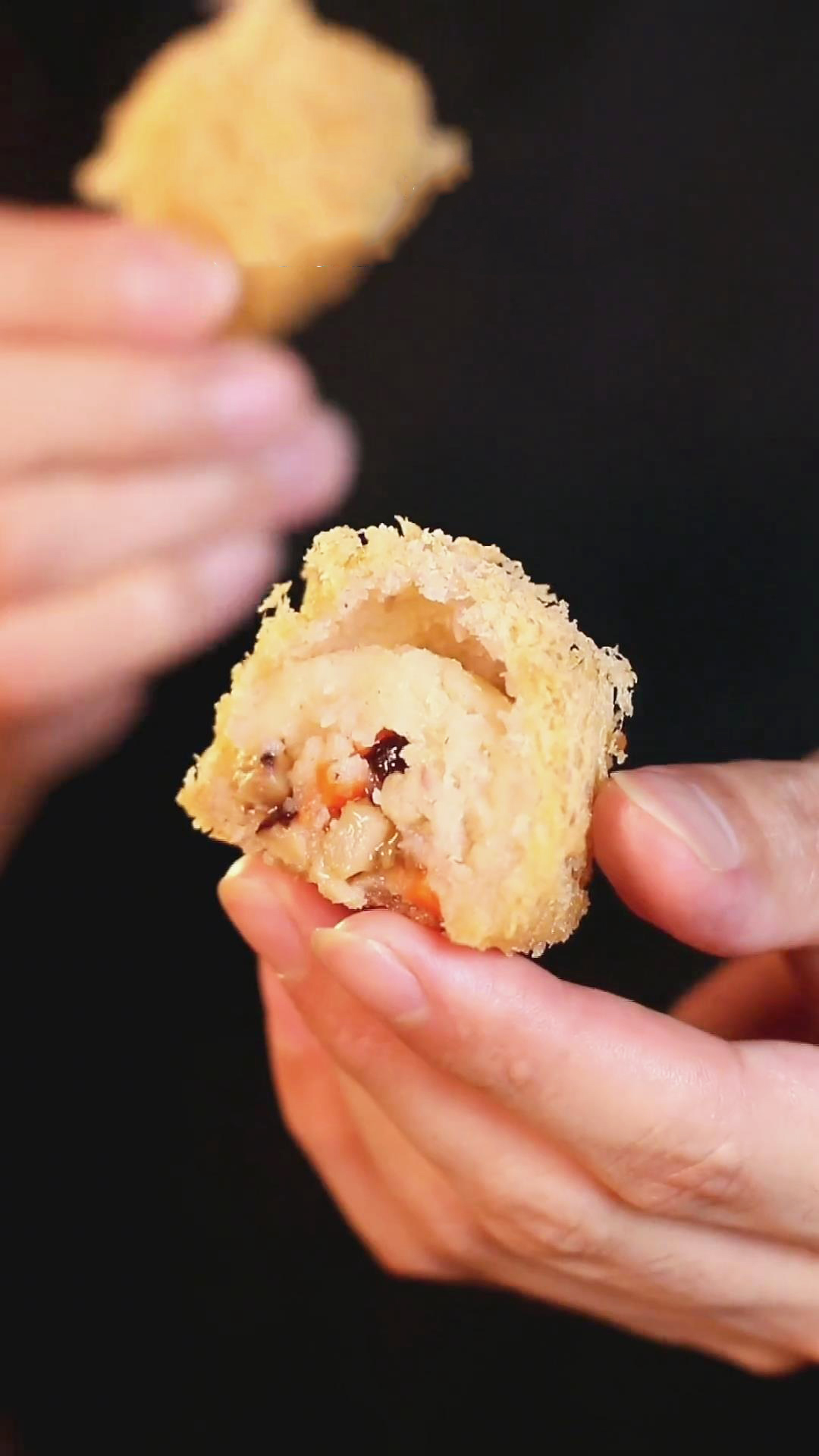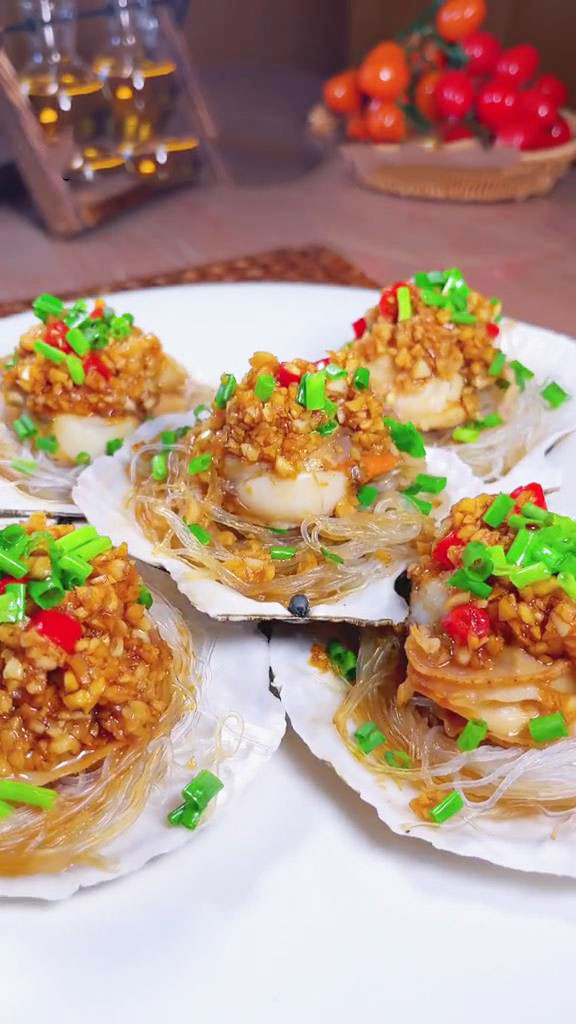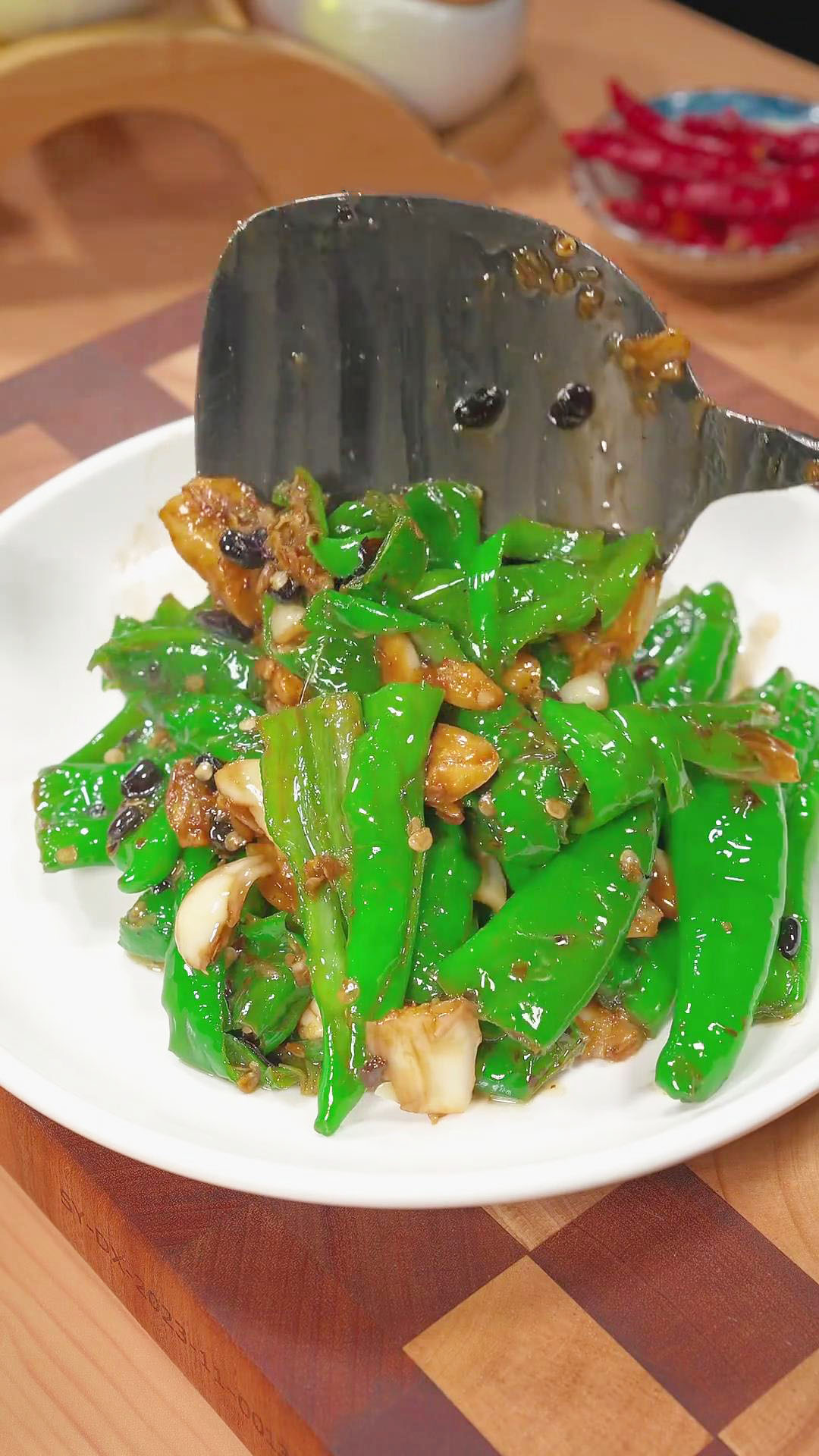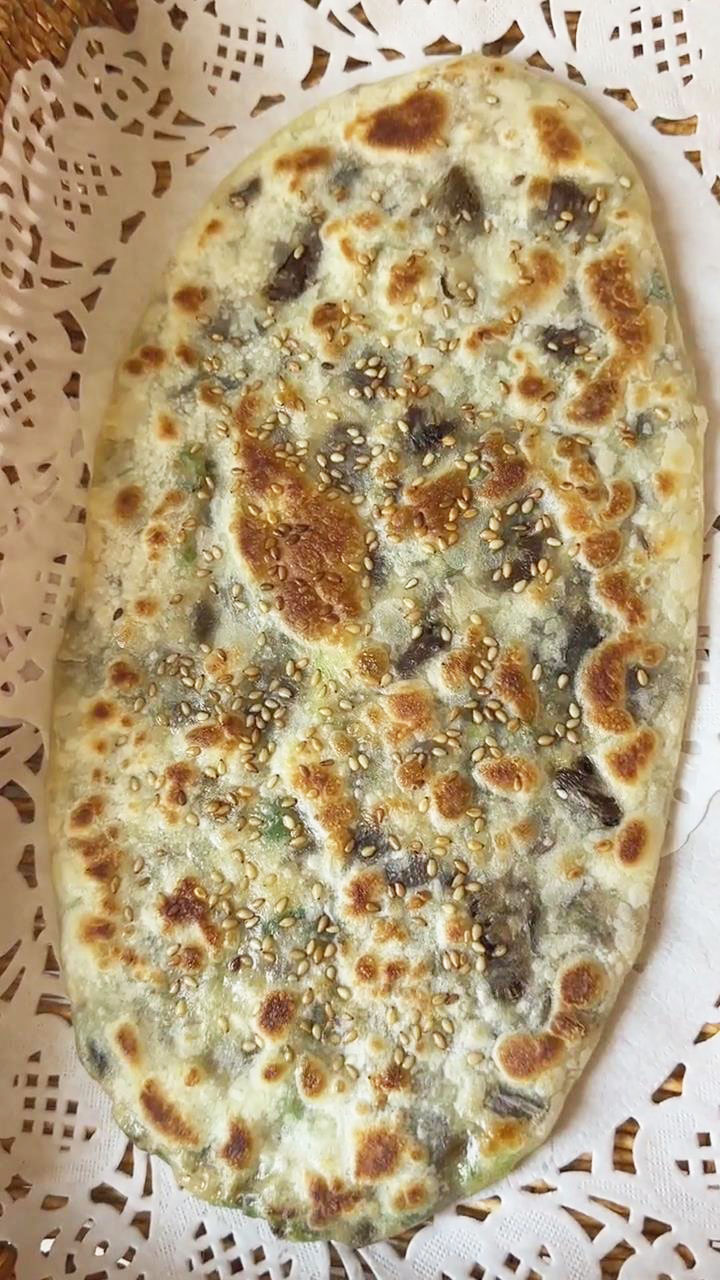Wu gok (芋角), or deep-fried taro dumpling puffs, is a popular dim sum dish for yum cha or Cantonese brunch. It combines two contrasting textures: a delicate, flaky outside crust and a soft, moist center. Create this dish with its signature taro-filled wrapper and flavorful filling made with meat and vegetables.
All About Wu Gok – Deep-Fried Taro Dumpling Puffs
Elevate your dumpling recipes with wu gok or deep-fried taro dumpling puffs. This special dim sum dish is also known as woo kok, taro dumplings, taro puffs, and phoenix tail crispy dumplings. It is one of the most common traditional dishes you can find in a typical pushcart in dim sum restaurants, along with Ham Sui Gok 咸水角 (Fried Glutinous Rice Dumplings), Ma Lai Gao, Deep Fried Milk, and Xiao Long Bao, to name a few.
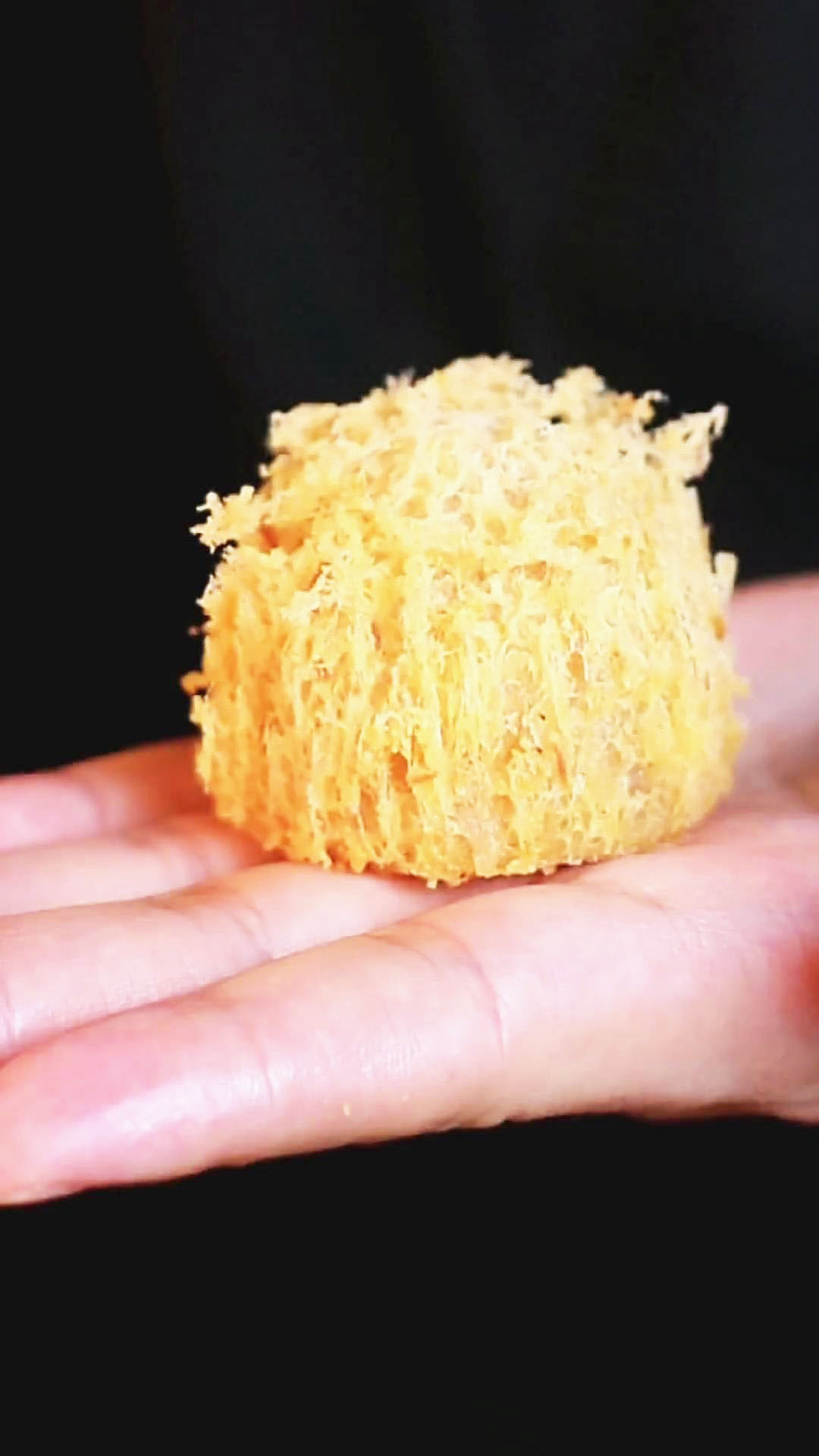
Unlike a traditional dumpling wrapper made from flour and water, Wu Gok incorporates mashed taro, wheat starch, lard, butter, and seasonings. With this combination of ingredients, the dumpling wrapper becomes lacy, puffy, and delicate after frying. The inside is a soft filling made of chopped pork belly, mushrooms, carrots, and various seasonings.
While Deep-Fried Taro Dumpling Puffs may seem complex at first glance, it’s quite manageable with some time and effort. Although it requires more than an hour to prepare and involves some labor-intensive steps, the cooking process itself is straightforward. From steaming and mixing to frying, shaping, and assembling, this recipe follows simple cooking techniques. For those seeking an uncomplicated version, my Deep-Fried Sugared Taro recipe is worth a try.
What To Know About Taro (Colocasia Esculenta)
Taro is a starchy root vegetable also known as Colocasia Esculenta of the Araceae plant family. Keep in mind this root vegetable is different from a regular potato, sweet potato, or yam. However, they are somewhat similar in terms of taste and texture.
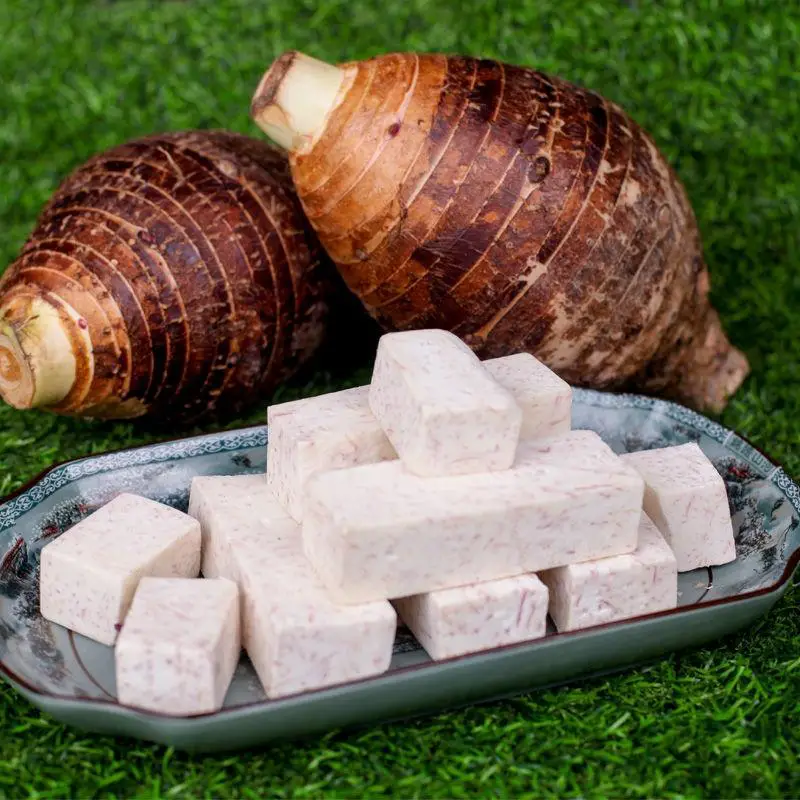
When looking for taro in the supermarket, it should have brown to gray skin and white flesh with tiny purple specks. Its taste is starchy, slightly sweet, and nutty. You can use taro in various Asian dishes, such as taro bun with taro paste, taro sago dessert soup, taro bubble milk tea, and taro balls, to name a few.
Handling taro is done with caution since it is high in oxalate crystals. This makes it toxic when eaten raw and can cause skin irritation when touched without kitchen gloves. Nevertheless, as long as taro is cooked correctly and handled safely, it gives you many health benefits for better digestion, blood sugar control, and heart health.
Essential Recipe Techniques And Alternatives
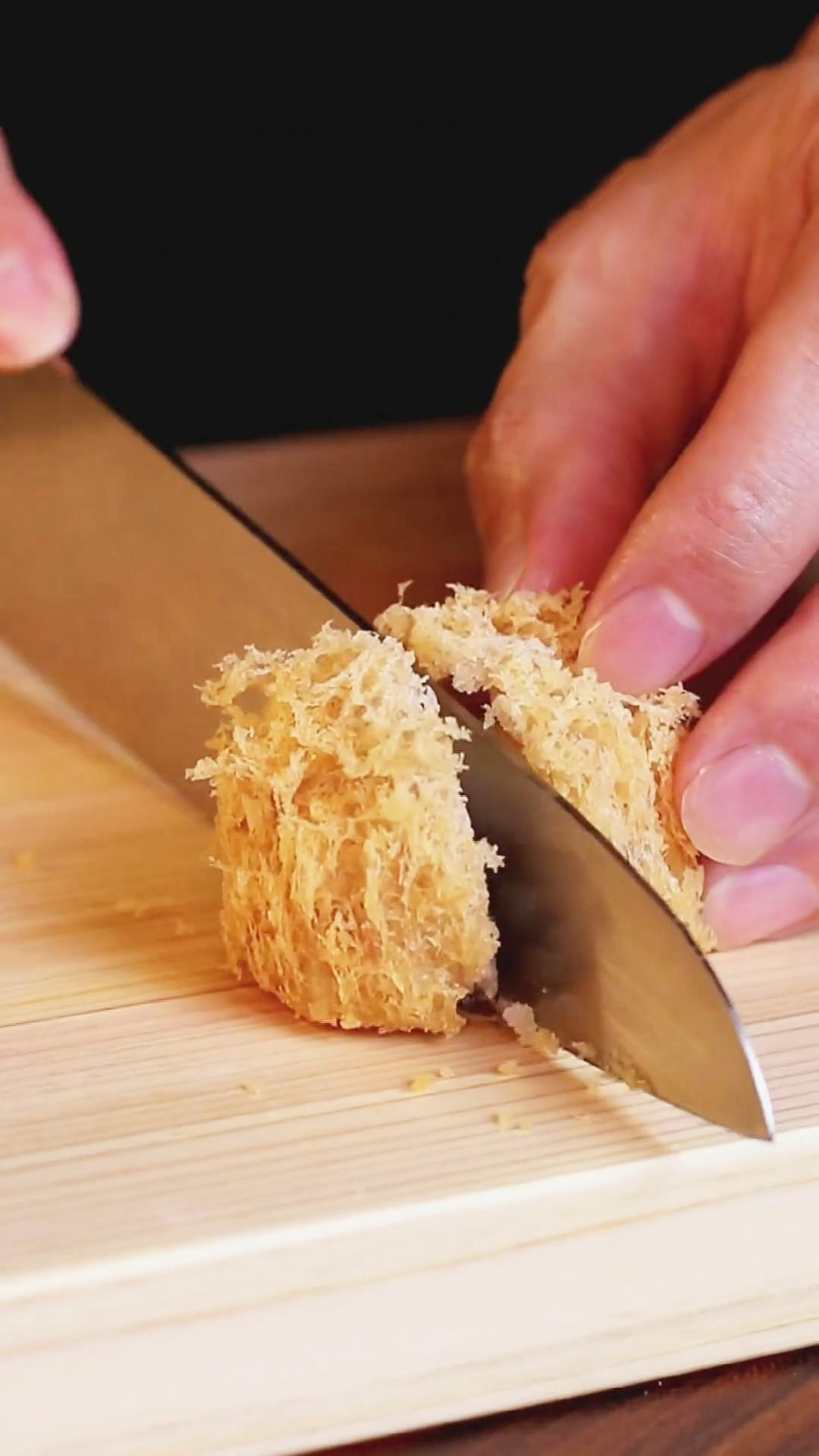
Who wouldn’t want the perfect taro puffs the first time around? In order to do that, especially if it is your first time making this dish, make sure to follow my detailed steps and recipe techniques below. Here are essential tips and alternatives to making the wrapper and filling.
Dumpling Wrapper
In a nutshell, the wrapper is made with mashed taro combined with mixed wheat starch and boiled water. To improve taste and texture, I add Chinese five spice powder, salt, sugar, lard, and butter. This is refrigerated before assembling it with the filling.
- Taro: You can buy fresh, frozen, or canned taro. Select large, unblemished taro roots that do not show signs of mold, wrinkles, or soft patches. You should be able to feel it is firm but still light. You can usually find taro at Asian markets and in grocery stores with an international section. It is possible to replace taro with sweet potatoes, such as yellow or purple sweet potatoes. Learn more about taro by reading Taro Vs Sweet Potato Vs Yam Vs Yuca.
- Wheat starch: Take note wheat starch is different from wheat flour or regular flour. It is a refined form of wheat flour that is mainly used to improve texture, viscosity, and binding. Although you can replace it with cornstarch, potato starch, or tapioca starch, it will produce a different kind of texture. You will also need boiling water to slightly cook the wheat starch before mixing it with the mashed taro.
- Chinese five spice powder: This spice adds a sweet, warm, and a hint of licorice-like flavor to the wrapper. It is a mix of Star anise (八角), Chinese cinnamon (肉桂), Fennel seeds (小茴香), Szechuan peppercorns (花椒), and Cloves (丁香). You can make one yourself with my homemade Chinese Five Spice Powder If you want to replace this spice, try any of the 5 Best Chinese Five Spice Substitutes I have outlined.
- Salt and sugar: Salt has many purposes for the dumpling wrapper. It enhances the flavor and makes the dumpling wrapper slightly chewy and more durable. You can use sea salt, kosher salt, or table salt. As for the sugar, it complements the flavors of the other ingredients and adds a bit of sweetness. Use white sugar, brown sugar, coconut sugar, or cane sugar.
- Lard and butter: I use 70g of lard and 70g of butter. However, you can use either lard or butter measuring 140g. The purpose of lard and butter is to give the wrapper structure and a rich taste and texture. If you prefer a hint of pork flavor, go for lard. Other alternatives to use are vegetable shortening, dairy-free butter, margarine, or coconut oil.
Filling
It is up to you how you want to make the filling the way you like it. Add your desired vegetables and adjust the seasoning according to your preference. In my recipe, I use pork belly with mushrooms and carrots.
I season it with black pepper powder, salt, sugar, Chinese rose wine (optional), and dark soy sauce. To thicken the filling and not make it too wet, I add cornstarch slurry as well. Here are other great ideas on what to put in the filling.
- Pork belly: You will need about 100g of diced pork belly. Alternatively, you can use other pork slices and meat such as chicken or beef. To make an all-veggie filling, I recommend diced mushrooms like shiitake and button. You can also incorporate extra firm tofu and soy ground meat.
- Vegetables: Vegetables add extra flavor and texture. Use diced carrots, chopped green onions, and grated napa cabbage.
- Seasonings: White pepper powder, black pepper powder, salt, sugar, and light or dark soy sauce are some examples of seasonings to use. For a rich and complex flavor, I highly recommend using Chinese rose wine or mei gui lu jiu. It is a common Cantonese ingredient for meat dishes that infuses rose-flavor sorghum liquor. Lastly, thicken the sauce with cornstarch slurry. To make this mixture, mix 1 tbsp of cornstarch with 2 tbsp of water (1:2 ratio). If you don’t have cornstarch, you can substitute 1 tbsp of cornstarch with 2 tbsp of tapioca flour or 1 tbsp of potato starch.
You’ll Need These Ingredients And Kitchenware
The things needed are quite basic, just your cooking pan and steamer. If you don’t have a steamer, you can still steam without a steamer in 5 methods: pan with steamer rack, microwave, pan with sieve, rice cooker, and instant pot. One special piece of equipment I do recommend is a kitchen weighing scale in order to get the correct measurements for your dumpling wrapper.
Don’t forget to use kitchen gloves if you think you will get skin irritation with taro, as some may or may not experience this. Other than that, the other items are optional and you just need to complete the ingredients for the wrapper and filling. Here’s what you need for the recipe.
Kitchenware
- Knife and chopping board
- Steamer
- Mixing bowl
- Straight (cylindrical) rolling pin or potato masher
- Kitchen gloves
- Kitchen weighing scale
- Non-stick pan
- Spatula
- Strainer spatula
Ingredients
Dumpling wrapper
- 250g of taro
- 100g of wheat starch
- 150g of boiling water
- 5g of Chinese five spice powder
- 5g of salt
- 5g of sugar
- 70g of lard (refer to my lard-making recipe for instructions)
- 70g of butter
Filling
- 100g of pork belly
- 30g of mushrooms
- 50g of carrots
- 20ml of water
- 1 tsp of black pepper powder
- 1 tsp of salt
- 1 tsp of sugar
- 1 tsp of Chinese rose wine
- 1 tsp of dark soy sauce
- Cornstarch slurry (prepared separately)
- Oil for deep-frying
Detailed Instructions To Make Deep-Fried Taro Dumpling Puffs
The recipe instructions are divided into three parts: make the dumpling wrapper, fry the filling, and deep-fry the assembled taro puff. You can do the entire recipe in just 10 steps. Check out my Instagram or TikTok tutorial video to learn more about the steps.
Peel and steam the taro until soft enough for mashing.
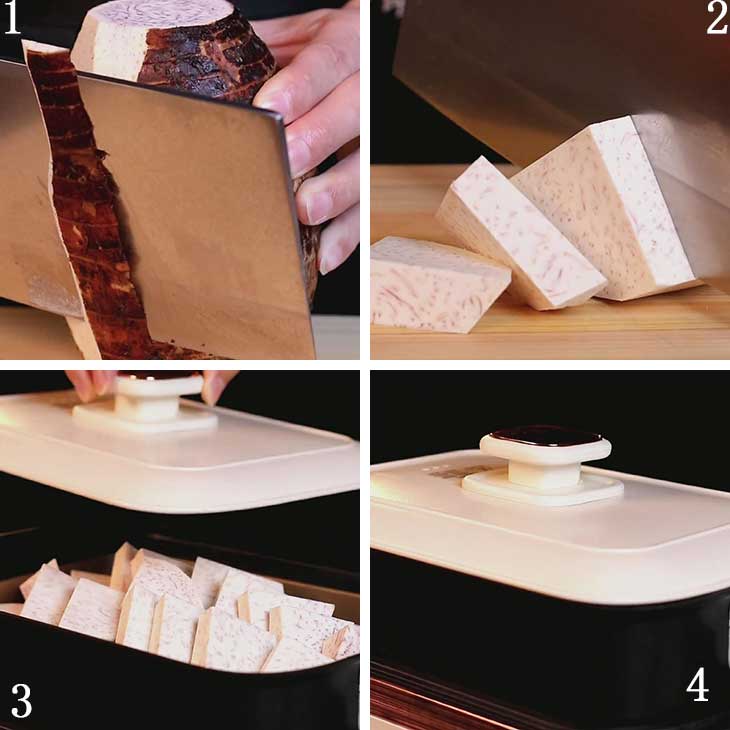
Cook the wheat starch with boiling water and mix it evenly. Take it out of the bowl and press it with your hands to form a round ball.
Mash the steamed taro and combine it with the wheat starch mixture. Make sure it is evenly distributed.

Then, add Chinese five-spice powder, salt, sugar, lard, and butter. Mix thoroughly and refrigerate for 30 minutes.
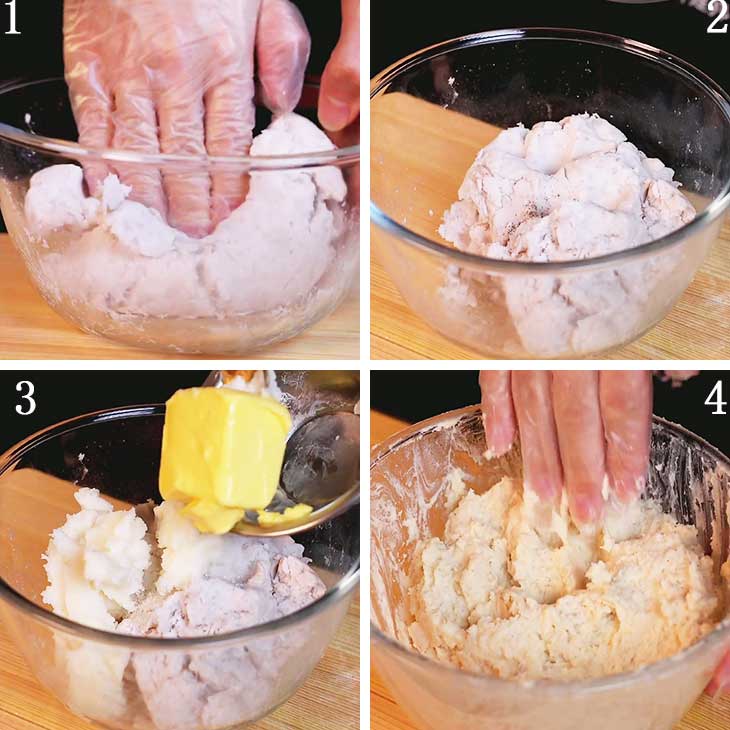
In a pan, fry the pork belly. Then, add the diced mushrooms, diced carrots, and 20ml of water.
Season with a dash of black pepper powder, salt, sugar, Chinese rose wine, and dark soy sauce.
Pour the prepared cornstarch slurry into the mixture and stir it in thoroughly. Wait for the meat mixture to thicken.
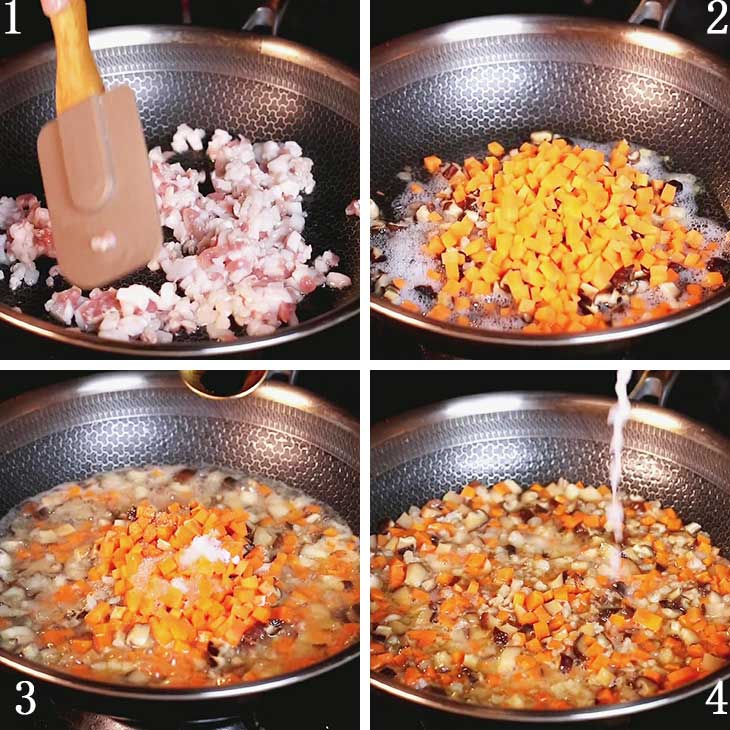
Assemble the dumpling by first shaping the taro dumpling mixture into a thick circular wrapper and placing the filling in the center.
Seal the dumpling by shaping it into a round ball with both hands.
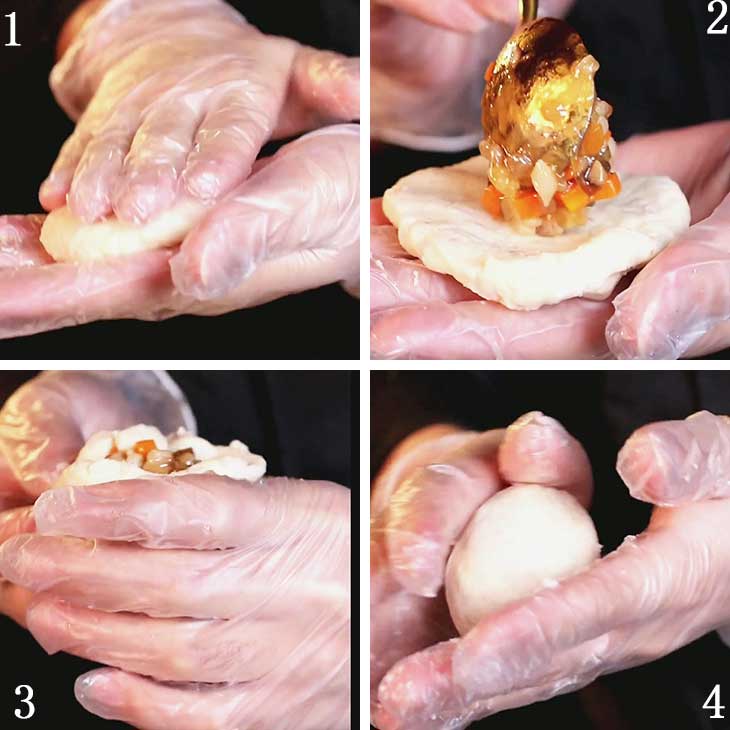
Heat the oil to about 180°C or 356°F and fry the taro dumpling until it turns into a golden yellow taro puff. Make sure to fry the taro puffs at the right oil temperature. The temperature should not be too high or too low.
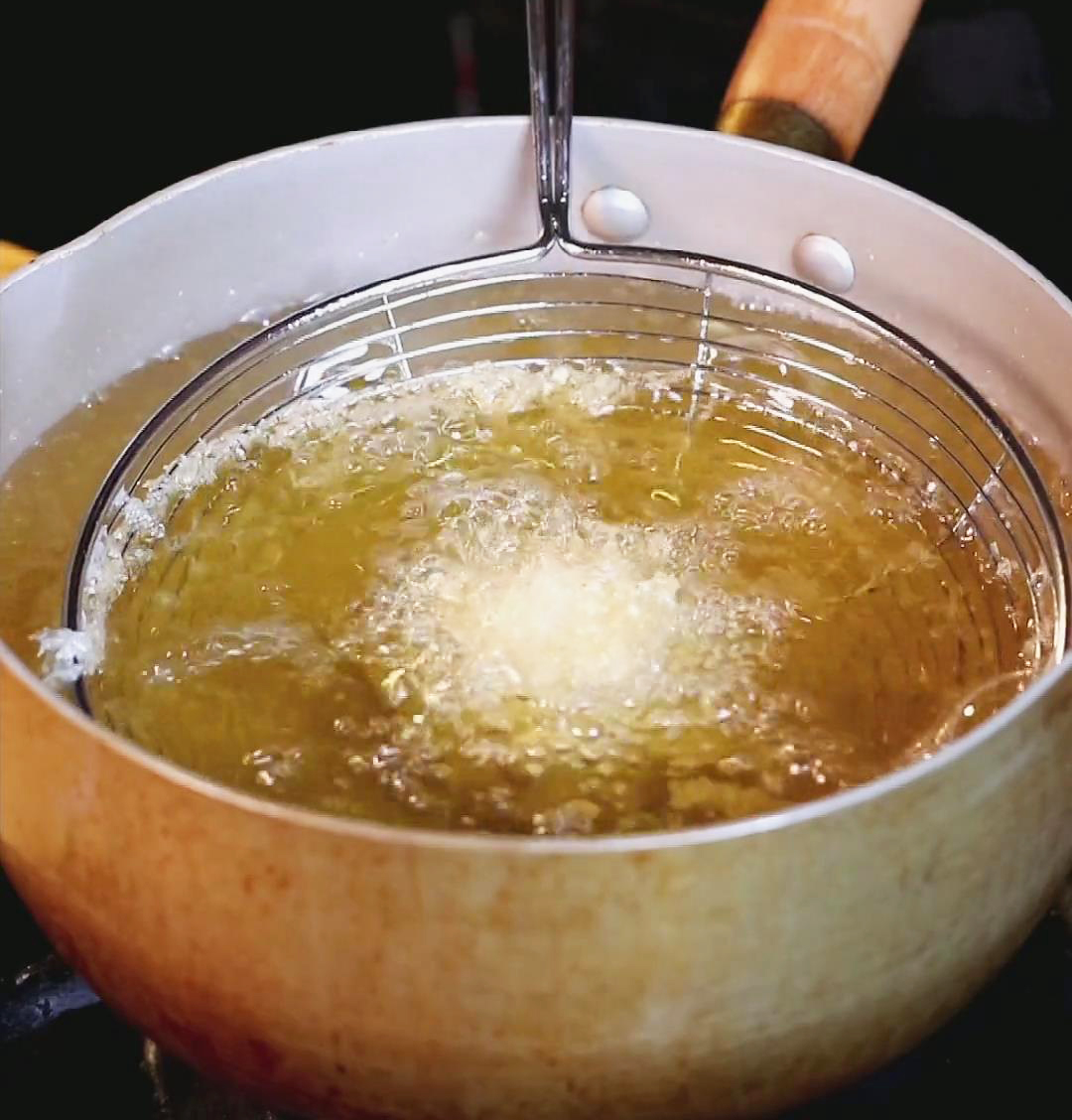
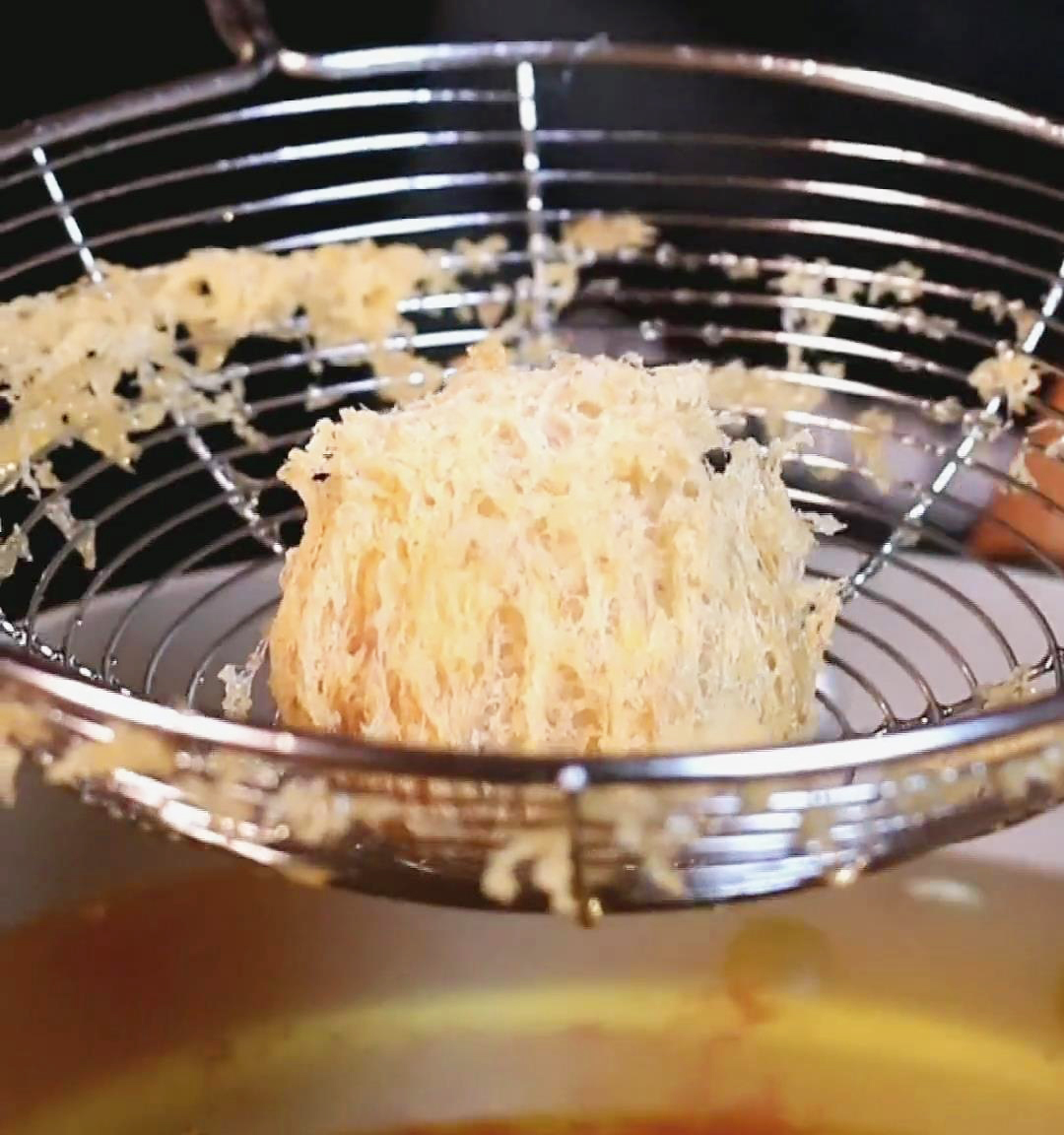

Wu Gok 芋角 (Deep-Fried Taro Dumpling Puffs)
Equipment
- Knife and chopping board
- Steamer
- Straight (cylindrical) rolling pin or potato masher
- Kitchen weighing scale
- Non-stick pan
- Strainer spatula
Ingredients
Dumpling wrapper
- 250 g of taro
- 100 g of wheat starch
- 150 g of boiling water
- 5 g of Chinese five spice powder
- 5 g of salt
- 5 g of sugar
- 70 g of lard
- 70 g of butter
Filling
- 100 g of pork belly
- 30 g of mushrooms
- 50 g of carrots
- 20 ml of water
- 1 tsp of black pepper powder
- 1 tsp of salt
- 1 tsp of sugar
- 1 tsp of Chinese rose wine
- 1 tsp of dark soy sauce
- Cornstarch slurry prepared separately
- Oil for deep-frying
Instructions
- Peel and steam the taro until soft enough for mashing.
- Cook the wheat starch with boiling water and mix it evenly. Take it out of the bowl and press it with your hands to form a round ball.
- Mash the steamed taro and combine it with the wheat starch mixture. Make sure it is evenly distributed.
- Then, add Chinese five-spice powder, salt, sugar, lard, and butter. Mix thoroughly and refrigerate for 30 minutes.
- In a pan, fry the pork belly. Then, add the diced mushrooms, diced carrots, and 20ml of water.
- Season with a dash of black pepper powder, salt, sugar, Chinese rose wine, and dark soy sauce.
- Pour the prepared cornstarch slurry into the mixture and stir it in thoroughly. Wait for the meat mixture to thicken.
- Assemble the dumpling by first shaping the taro dumpling mixture into a thick circular wrapper and placing the filling in the center.
- Seal the dumpling by shaping it into a round ball with both hands.
- Heat the oil to about 180°C or 356°F and fry the taro dumpling until it turns into a golden yellow taro puff. Make sure to fry the taro puffs at the right oil temperature. The temperature should not be too high or too low.
Video

